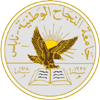Sun, 2010-08-29 13:28 — Majd Khalid Shhadi
Course Code:
64232
Course Outline:

Faculty of Engineering
Chemical Engineering Department
Course Content
Course: Heat Transfer
Code: 64232, 64334
Credit Hour: 3
Perquisite: Fluid Mechanics (64231)
Semester: First Semester 2010/2011
Lecture Time: Sunday, Tuesday, Thursday, 11.00-12:00 (112020)
Instructor: Eng. Majd Shhadi (e-mail: majdshhadi@najah.edu)
COURSE DESCRIPTION
This course is a study of thermal properties of materials, conduction through simple shape and composite materials free and forced convection, overall heat transfer coefficient, dimensional analysis, steady and unsteady state operations. Film and drop wise condensation, nucleate and film boiling of liquids (evaporation) students also learn heat exchangers types and design.
COURSE OBJECTIVES
The student will be able to:
- Understand the basic concepts of conduction, convection and radiation heat transfer.
- Understand how to formulate and be able to solve one dimensional conduction heat transfer problemsusing Fourier’s Law for one-dimensional conduction of heat in solid for steady and unsteady state.
- Develop and apply conduction and convection thermal circuits.
- Choose and apply appropriate dimensionless correlations for external and internal flows to solve convection heat transfer problems.
- Calculate individual heat transfer coefficients inside conduits and outside bodies using literature correlations or from energy/material balance findings.
- Calculate overall heat transfer coefficients from individual heat transfer coefficients or from energy material/balance findings
- Analyze phase change state, filmand dropwise condensation, nucleate and film boiling of liquids (evaporation).
- Analyze heat exchangers.
- Apply fundamental heat transfer principles to perform heat exchanger design and performance calculations.
INTENDED LEARNING OUTCOMES
- Knowledge and understanding: On successfully completing this course unit, students will be able to:
- Recall the principal terminology, concepts and theories of heat transfer by conduction, convection and radiation
- Translate simple problems involving heat exchangers components and systems into a form which can be solved using standard mathematical methods.
- Solve transient problems
- Skills and other attributes: On successfully completing this course unit, students will be able to:
- Intellectual skills
- Evaluate and explain the significance of dimensionless groups used to characterize heat transfer problems and data.
- Solve simple problems involving heat conduction, convection and radiation for solids and fluids in simple geometries.
- Practical skills
- Apply the following design methods to simple engineering calculations: effectiveness-NTU method of heat-exchanger design; transient heat transfer in a lumped capacity system, use of one-dimensional conduction charts.
TEXT BOOK
Cengel, Y. A. 2003. Heat Transfer: a practical Approach. 2ed edition. The McGraw-Hill companies.
GRADING
First Exam 25%
Second Exam 25%
Final Examination 50%
NOTES:
- Please READ text before each lecture and study it immediately following the lecture.
- ABSENCE FROM AN EXAM: Makeup exams will be given only under extremely unusual circumstances.
TOPICS
|
# |
Topics to be Covered |
CHAPTER |
|
1 |
Basics of Heat Transfer
|
1.5 1.6 1.7 1.8 |
|
2 |
Heat Conduction Equation
|
2.1 2.2 |
|
3 |
Steady Heat Conduction
|
3.1 3.3 3.4 3.5
|
|
FIRST EXAM |
||
Heat Transfer in Common Configurations |
3.6 3.7 |
|
|
4 |
Transient Heat Conduction
|
4.1 4.2
|
|
5 |
Fundamentals of Convection
|
6.1 6.2 6.4 |
|
SECOND EXAM |
||
|
6 |
Internal Forced Convection
|
8.1 8.2 8.3 8.4 8.5 8.6 |
|
7 |
Boiling And Condensation
|
10.1 10.2 10.3 10.4 10.5 10.6
|
|
8 |
Heat Exchangers
|
13.1 13.2 13.3 13.4 13.5 13.6
|
|
FINAL EXAM |
||
- 847 reads

